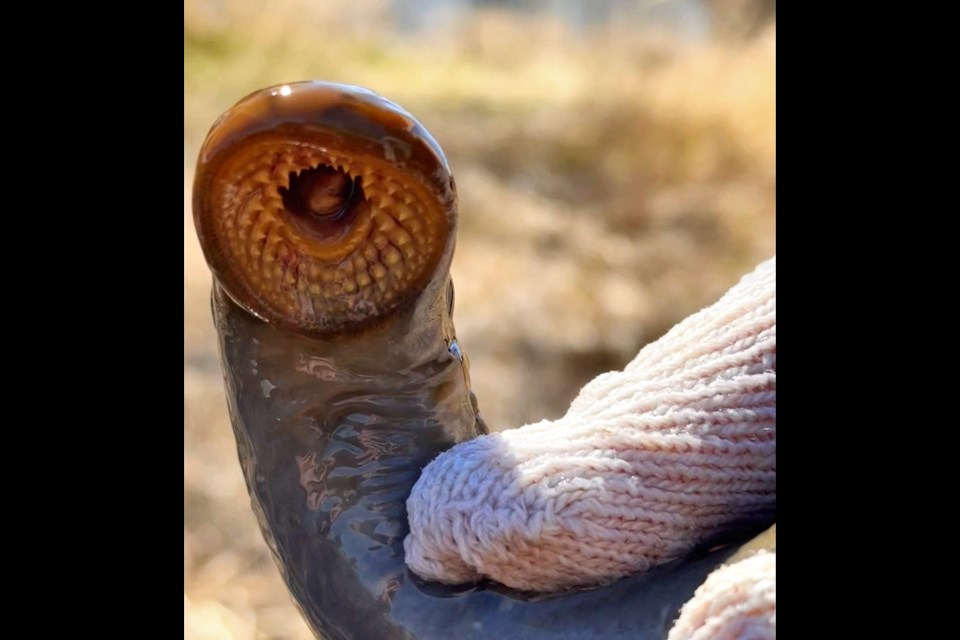THUNDER BAY — Lakehead Region Conservation Authority staff have a new assignment this year – helping to determine the status of the sea lamprey population in Lake Superior's tributaries.
For the first time, the LRCA has been contracted by the federal Department of Fisheries and Oceans to trap lamprey in the Neebing and McIntyre Rivers over an eight-week period.
The invasive, eel-like fish spawns from April to June.
Since two traps were placed in the Neebing near Edward Street on April 29, one of the invasive, eel-like fish has been caught.
Traps are checked daily during this "mark and recapture" study.
DFO requires the lamprey to be released back to the river after a fin has been partially clipped, so they can be identified if they are trapped a second time.
When this happens, it helps scientists determine how they are moving in a river system.
Biological data is then recorded, including length, weight, sex and maturity level, and all this information is reported weekly to DFO.
Michelle Willows, environmental planner for the conservation authority, said the research contributes to the development of population estimates.
"Part of the successful sea lamprey management program is understanding how many spawning-phase sea lamprey are in the lake, and where they are. So the results help direct sea lamprey management for the long run."
Canada and the U.S. manage the Great Lakes lamprey population, largely by periodically applying a chemical to streams to eliminate the larvae before they develop their sharp-toothed, suction-cup mouths and migrate to lakes to look for fish.
Sometimes called the vampire of the lakes, sea lamprey latch to the body of a fish and use their razor-like tongues to rasp a hole through the scales and skin so they can feed on blood and other fluids.
The resulting trauma can be fatal to the fish.
After the sea lamprey invaded the Great Lakes in the 20th century, it devastated commercial fishing and sport fishing on Lake Superior.
As few as one in seven fish may survive a sea lamprey attack.
According to Ontario's Invading Species Awareness Program, an adult lamprey spends 12 to 20 months feeding on other fish until it's ready to travel upstream to spawn.
It has a lifespan of five to nine years.
The sea lamprey's population in Lake Superior reportedly took an upswing during the COVID-19 pandemic, when lampricide treatment was scaled back because of staffing restrictions.
TBnewswatch requested updated population estimates from DFO on Tuesday but has not yet received a detailed response.
